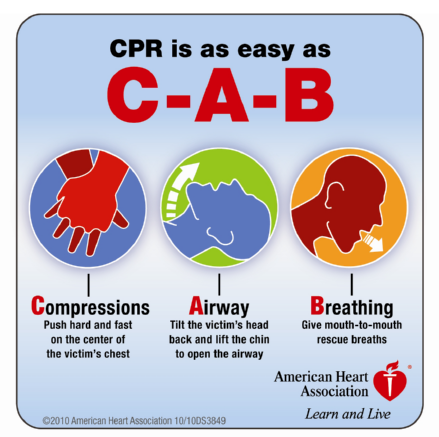What is CPR?
Cardiopulmonary resuscitation aka CPR is a lifesaving technique. It comes in handy in times of emergencies. Usually given to someone whose heartbeat or breathing has stopped due to near drowning or heart attack. According to government medical agencies any an untrained or medical personnel should start CPR with chest compression.
It’s better to try and fail rather than doing nothing. Even if you are a novice at CPR, but your little effort can save someone’s life.
According to the American Heart Association listed below are CPR related advice:
Trained or a working Medical Professional. If you are confident and trained to handle an emergency start with chest compressions. After at least 30 chest compression check airway and give rescue breaths.
Under training or rusty. Instead of being a bystander, begin by giving chest compressions. If you do not have the confidence, even then you can give CPR. The rate must be 100 cpm (compressions per minute.)
If a novice. If untrained in giving CPR, provide hands-only CPR. Until paramedics arrive. You should give uninterrupted chest compressions. You don’t need to give rescue breathing.
Kindly note: Do not give CPR to newborns. It can be fatal.
In a span of few minutes, your brain can suffer fatal damages if oxygenated blood does not reach the brain. CPR maintains the flow of oxygenated blood to your vital organs especially your brain. Once done with CPR a proper medical treatment is needed to restore normal heart rhythm.
-
Don’t rush into giving CPR, always check
-
If the person you are giving CPR to is conscious, then normal chest compression ought to do the trick if not try to shake the person up. If he/she is still unconscious, call 911 and explain them the situation and your location. Begin by giving chest compressions and if an AED is within your reach (and you are experienced), give a shock before starting with CPR.
Importance of C-A-B
CAB are the order in which a CPR should be performed ideally. It stands for
-
C- Compressions
-
A- Airway
-
B- Breathing
Restore blood circulation in the body: Compressions
-
Make the person lie down on their back.
-
Kneel and place your palm on the person’s chest right between the nipples.
-
Now place the other palm on top of your previously placed palm.
-
Push hard using your body weight straight down.
-
Repeat this exercise with the rate of 100 cpm (compressions per minute).
-
If you are a novice, continue this until help arrives.
To Clear the Airway: Airway
Do this only, if you are a trained in giving CPR. After at least 30 compressions try to open the airway of the unconscious person. Support the back of the person’s head with your palm, using your other hand lift the chin up.
Even after this, if you do not feel the other person breathing then continue with compression and airway alternatively for two minutes each.
To Restore a Person’s Breath: Breathing
-
Rescue breathing is either mouth-to-nose breathing or mouth-to-mouth breathing.
-
Keep the person as he/she was in the airway mode, close their nose by pinching the nostrils and seal their mouth with yours and breath in their mouth.
-
Use the two rescue breaths rule.
-
Give the first breath and see if the patient’s chest rises, if yes continue with the second breath.
-
If not then do the airway before giving the second rescue breath.
-
Once done with two rescue breath, repeat the CAB cycle again. Do chest compression first, and then airway before giving the rescue breath again.
-
If the person does not move after 5 such cycles use AED (external defibrillator), and again resume CAB cycle.
-
Continue this exercise until you notice positive signs in the person you are giving CPR to or medical help arrives.
Your timely effort can be a lifesaver. For more information contact us here : Northwest Career College
